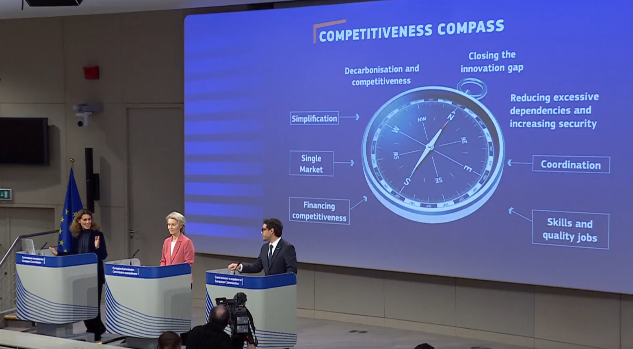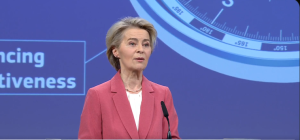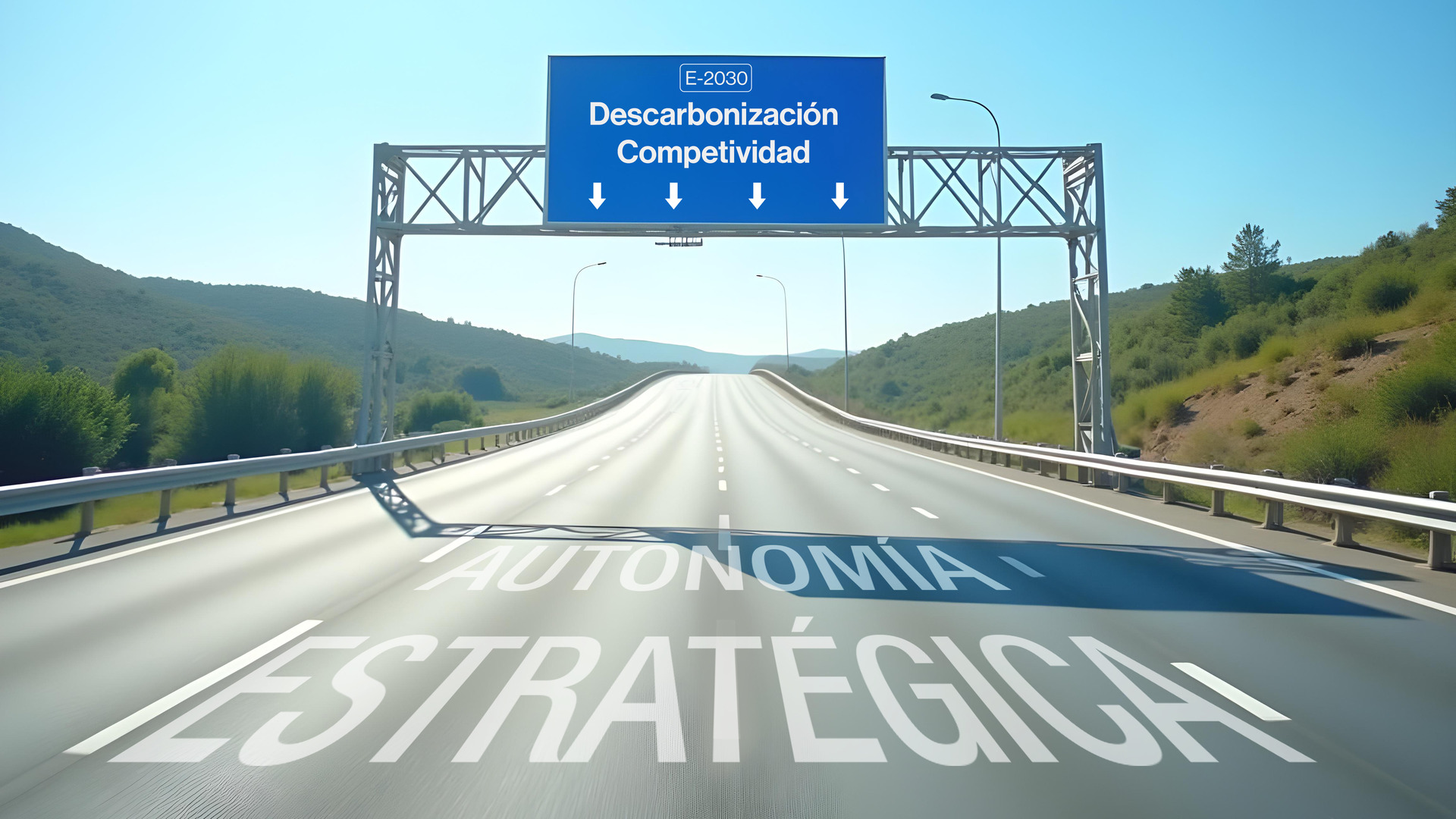-
Decarbonization and competitiveness should not be parallel paths but a single journey towards Europe’s industrial future.
-
The European Commission will develop specific plans for industries with high energy consumption, such as steel, and an Action Plan for Affordable Energy.
-
Ursula von der Leyen: “The European Union stands firm on the Green Deal objectives, without any doubt. This is a unique strength we have, and we must provide predictability to investors and clean technology companies.”
-
Strategic autonomy is not declared; it is built. A compass is of little use if the ship has not set sail.
For years, Europe has navigated turbulent waters in industrial energy management. Following international summits like COP29, which the Foro Industria y Energía (FIE) once described as “a ship without a compass,” the industry was once again left in a strategic limbo, with international agreements failing to address its role in the energy transition. In this context, the need for a compass is more evident than ever.
Fortunately, it seems that in 2025, the European Union has taken up the challenge. European Commission President Ursula von der Leyen presented the Competitiveness Compass on Wednesday, a roadmap that, according to the president, “translates the recommendations” of the Draghi Report into a concrete strategy to advance competitiveness.

The Draghi Report has laid a solid foundation upon which decisions can be built. Draghi has provided a diagnosis and prognosis of the bloc’s structural challenges. However, identifying problems is not enough; a strategy is needed to solve them. If the Draghi Report exposed the symptoms and the disease, the Competitiveness Compass aims to be the treatment and clearly defines the EU’s stance in a time of growing geopolitical and economic uncertainty. Beyond Von der Leyen’s speech, the document highlights key issues that could mark real progress in industrial energy management.
If there is one thing the international context has made clear, it is that strategic autonomy in energy management is not proclaimed; it is built. While the United States moves towards an America Only model, Europe continues to aspire to a timid Europe Almost First. The question is whether this compass is enough to move towards a true “Europe First.”
Europe in the Mirror: Recognizing Its Weaknesses According to Draghi’s Diagnosis
The first step in strengthening European industry is to adopt a realistic diagnosis, and in this regard, the Draghi Report has been clear in pointing out the EU’s structural weaknesses. Europe has built its industrial model on fragile foundations: dependence on cheap labor in China, subsidized energy from Russia, and outsourced security.

Ursula von der Leyen herself has bluntly acknowledged: “Today we see that Europe is still lagging behind the United States and China in terms of productivity growth.” This dependence has left Europe in a vulnerable position, especially in a context of increasing geopolitical rivalry.
However, Von der Leyen does not adopt a defeatist stance. On the contrary, she firmly states: “Those days are over.” This declaration underscores Europe’s proactive approach to correcting these weaknesses and regaining competitiveness, making it clear that it is not just about diagnosing but about acting to transform the situation.
The Reinforced Green Deal: Europe Forges Its “Europe First”
Faced with Trump’s “America Only,” Europe responds with “Europe First,” reaffirming its commitment to sustainability and competitiveness. Ursula von der Leyen left no room for doubt: “I want to be very clear. The European Union stands firm on the Green Deal objectives, without any doubt. This is a unique strength we have, and we must provide predictability to investors and clean technology companies.”
In this context, the European Union is not only responding to the protectionist movements of the United States but also charting its own path toward competitiveness.
A key step in this strategy is the implementation of “specific action plans for high-energy-consuming sectors such as steel, metals, and chemicals.” This measure is essential not only to ensure the sustainability of these strategic sectors but also to preserve the foundation of Europe’s industrial value chain. Securing the energy transition in these industries is not just a matter of competitiveness but of survival for other industries. Let us remember that the EU was born from the European Coal and Steel Community (ECSC), meaning the convergence of energy and industry.
Affordable Energy: Europe’s Achilles’ Heel
Access to affordable energy will be another decisive factor in the ecological transition of the industry. Ursula von der Leyen has clearly stated that “we must address energy prices, which are structurally too high in the European Union.” In response, the Commission will present the Action Plan for Affordable Energy in the coming weeks, designed to reduce energy costs and address the structural issues affecting both industry and European households.
This plan not only focuses on price reduction but also on electrification and accelerating the transition to clean energy. As the president indicated, “we will also work with more traditional industries to support them in the transition,” ensuring that traditional industrial sectors are not left behind.
To make this plan a reality, investing in Europe’s energy infrastructure is essential. Electricity, hydrogen, carbon dioxide networks, and storage systems must be modernized and expanded to ensure progress towards a net-zero energy system. This infrastructure investment will be crucial to reducing the risks associated with renewable energy limitations and to maximizing the benefits of the Single Energy Market.
Decarbonization and Competitiveness: A Single Path for Europe
 At Foro Industria y Energía, we welcome the fact that the Competitiveness Compass elevates to a strategic level an essential principle: decarbonization and competitiveness should not be parallel paths but a single journey toward Europe’s industrial future. The inclusion of this binomial as one of the three fundamental pillars of the roadmap reflects a deep understanding of its interdependent nature. Decarbonization and competitiveness are not independent processes but two sides of the same coin. Although the path to both goals may be challenging and winding, the final destination is the same: a stronger, more competitive, and more sustainable Europe.
At Foro Industria y Energía, we welcome the fact that the Competitiveness Compass elevates to a strategic level an essential principle: decarbonization and competitiveness should not be parallel paths but a single journey toward Europe’s industrial future. The inclusion of this binomial as one of the three fundamental pillars of the roadmap reflects a deep understanding of its interdependent nature. Decarbonization and competitiveness are not independent processes but two sides of the same coin. Although the path to both goals may be challenging and winding, the final destination is the same: a stronger, more competitive, and more sustainable Europe.
Europe has set an ambitious goal: achieving a fully decarbonized economy by 2050, with an interim milestone of 90% by 2040. These targets are not mere declarations of intent; they represent a firm commitment that should provide the predictability the industrial sector needs for long-term investments.
As the Compass report itself states, citing Draghi’s work, “decarbonization policies are a powerful growth engine when well integrated with industrial, competition, economic, and trade policies.” This integrated vision differentiates it from previous approaches, positioning sustainability not as an imposition but as a catalyst for innovation and competitiveness.
The Compass Shows the Way—Now We Must Set Sail
According to Albert Concepción, director of Foro Industria y Energía: “Von der Leyen’s speech has both highlights and shadows. The essence is truly inspiring, as it focuses on industry’s needs and recognizes the value of energy management in the process of reindustrialization and competitiveness. However, it falters by remaining a statement of intent. True clarity will come when we know the content of those specific industry plans, such as steel, and the Affordable Energy Action Plan announced by the Commission President.”
As Von der Leyen emphasized, “I want to be very clear: we have a plan, we have a roadmap, we have the political will. Now, what truly matters is speed and unity.” At Foro Industria y Energía, we recognize that a clear guide and path to the future have indeed been established. However, we insist that the crucial step of implementing these plans still remains. A compass, no matter how valuable, is useless if the ship does not start moving.
This document should not be just a rhetorical exercise. The real test of its effectiveness will be in the implementation of its measures. Charting the course is just the first step. Now, Europe must prove it has the wind at its back and the leadership necessary to navigate toward a competitive and sustainable future. It is time to turn theory into action. In short, it is time to set sail.

